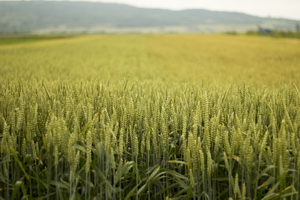
Discovery of Gene Controlling Shape and Size of Wheat Spikelets Could Shape Future Crops
April 11, 2018| |
 A new study conducted by a research team from John Innes Centre (JIC) has isolated a gene that controls the shape and size of wheat spikelets. The study focused on the genetics behind a specific mutant trait in bread wheat known as paired spikelets, where a wheat inflorescence is formed of two spikelets instead of the usual one. This trait, which bears resemblance to flower production in corn and rice, is a variation that could lead to increase in yield.
A new study conducted by a research team from John Innes Centre (JIC) has isolated a gene that controls the shape and size of wheat spikelets. The study focused on the genetics behind a specific mutant trait in bread wheat known as paired spikelets, where a wheat inflorescence is formed of two spikelets instead of the usual one. This trait, which bears resemblance to flower production in corn and rice, is a variation that could lead to increase in yield.
Using a range of techniques, researchers investigated wheat lines that display paired spikelets, derived from a mapping population called a multi-parent advanced generation intercross (MAGIC); a population of spring wheat created as a tool to study and identify the genetic origins of relevant traits. The study revealed a gene called TEOSINTE BRANCHED1 (TB1) regulates wheat inflorescence architecture, promoting paired spikelets through a mechanism which delays flowering and reduces the expression of genes that control the development of lateral branches called spikelets.
Analysis showed that alleles modifying the function of TB1 were present in a wide range of major modern wheat cultivars used by breeders in the United Kingdom and Europe; and that variant alleles for TB1 were present on two of the three wheat genomes of winter and spring wheat. Genetic analysis also showed that TB1 is linked to another gene that has been known for a long time: the so-called Green Revolution gene, Rht-1, which controls plant height. The study authors say that this information on TB1 gene is also an important contribution to possible floral architecture diversity in a number of other cereal crops including corn, barley, and rice.
For more details, visit the JIC News and Events.
| |
Biotech Updates is a weekly newsletter of ISAAA, a not-for-profit organization. It is distributed for free to over 22,000 subscribers worldwide to inform them about the key developments in biosciences, especially in biotechnology. Your support will help us in our mission to feed the world with knowledge. You can help by donating as little as $10.
-
See more articles:
-
News from Around the World
- Researchers Identify Cells that Trigger Flowering
- Scientists Remove 'Biomolecular Brakes' on Plant Oil Production
- Study on Perceptions of Brazilian Farmers Regarding GM Crops
- Experts Confirm Hybridization of Mega-pests in Brazil
- Newly Discovered Hormone Helps Keep Plants from Dehydration
- New Compounds that Keep Plants Fresh
- Collaboration Explores Nature-Friendly Plant Vaccines Against Pests and Diseases
- 'Well Fed' Documentary Wipes Away Fear of GMOs
- Discovery of Gene Controlling Shape and Size of Wheat Spikelets Could Shape Future Crops
-
Research Highlights
- Overexpression of OsTPS19 Confers Enhanced Rice Blast Resistance
- Tomato Transcription Factor Influences Lateral Bud Formation in Tomato
-
Announcements
- IBS 2018
- Asian Short Course on Agribiotechnology, Biosafety Regulations and Communication
-
Resources
- Online Courses on Biosafety and Biotechnology
-
Plant
- Researchers Test DNA-Free CRISPR-Editing in Potato
- CRISPR-Cas9 Helps Pinpoint Plant Architecture Genes in Tobacco
- CRISPR-Knock out of FAE1 Gene Improves Camelina Seed Oil Quality
- Tungro-Resistant Rice Developed through CRISPR-Cas9
-
Read the latest: - Biotech Updates (November 19, 2025)
- Gene Editing Supplement (October 29, 2025)
- Gene Drive Supplement (February 22, 2023)
-
Subscribe to BU: - Share
- Tweet
